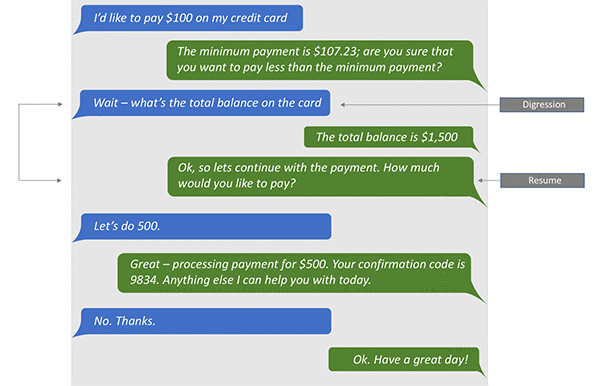

You can define the data type of the variable and choose between context and custom while creating a new variable. System variables are used to access back-end information of conversations. Variables can be of three types: system, context, and custom. Variables are used to hold the data that will be taken in as input from the user and can also be used to display some data as output to the user. Entities are specifically useful when used with “Conversation Repair.” When a user inputs something different from the entity format defined, we can add messages that will be shown to users to correct their input. We can create custom entities and define the extraction type (Pattern, Value), regex pattern, and description. There are two types of entities: System and Custom. Einstein Bots EntitiesĮntities are used to define the type of data that we will be taking in from the user. The “Confused” and “No Agent” dialog will be called automatically if the bot is not able to understand the user input and there is no agent available. Moreover, dialogs can be created and grouped under “Error Handler” to process various types of errors that can occur during a conversation. You can also create new dialogs, group dialogs, and redirect to dialogs, creating a seamless experience for your customers. This menu has some pre-built dialogs such as Welcome, Main Menu, End Chat, etc. You can also add additional conversation languages that your bot will support, edit channels, profiles for Bot User and also log conversations.

The Overview menu lets you add and edit the basic bot information such as name and default language, etc. To toggle between overview, dialog, variable, entity, performance management, and model management, click the small arrow to the right of ‘Dialogs’ in the upper left. Basically, this is where the conversations are created. The left section has the dialogs, and the right section is where you will create the journey for your bot and add the step properties.


On the screen above, you can see two sections. It’s time to meet the Einstein Bot Builder Click on “Next”, “Proceed”, and “Finish”. You can do the configuration inside the bot builder too. Give your bot a name and the language that your bot will use.Select “Start from Scratch” and click “Next”.Select Bot Type in the dialog that appears.Click on “Create a New Bot” to get started.Enable Einstein Bots for your org by clicking on the Enable button on the top right.Select Einstein Bots under Service Cloud Einstein. In the Quick Find box, type “Einstein Bots”.You can follow these steps below to get to the Einstein Bot Builder.
#Salesforce chatbot how to
How to reach the Salesforce Einstein Bot Builder In case of complex queries that the Bot is not able to process, the Bot routes customers to service agents. These features are highly customizable and easy to work with. Salesforce’s Einstein Bots is gaining popularity because of all the features it offers.
#Salesforce chatbot manual
Also, chatbots can significantly reduce agents’ workloads as they replace most of the repetitive manual tasks of answering questions and following up with things like “What is the status of my order?” or “How can I get a refund?” etc. If designed well, the conversation could sound very human and natural. Chatbots are great for customer service as they give you the ability to respond instantaneously. If you’re unfamiliar with the Salesforce’s Einstein Bots, they are chatbots.


 0 kommentar(er)
0 kommentar(er)
